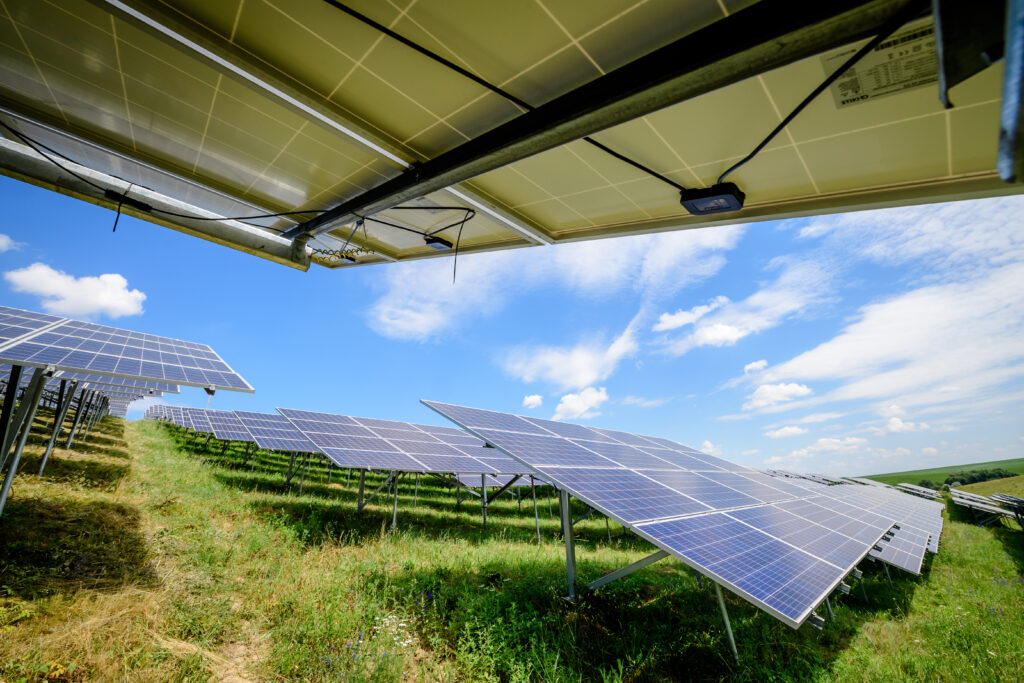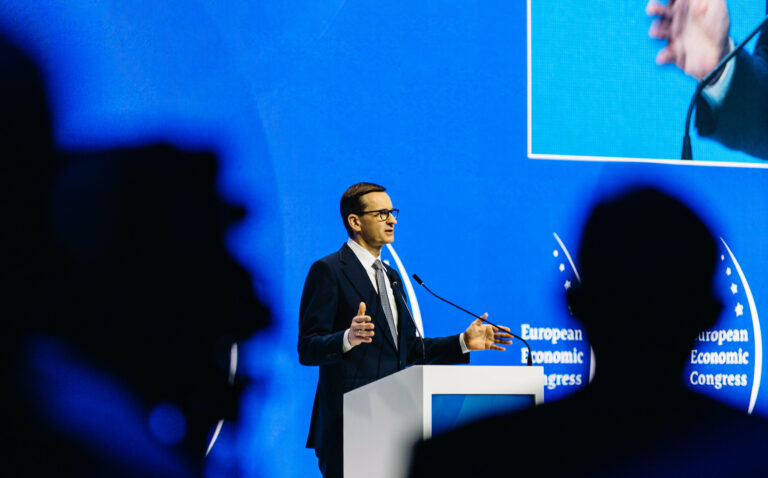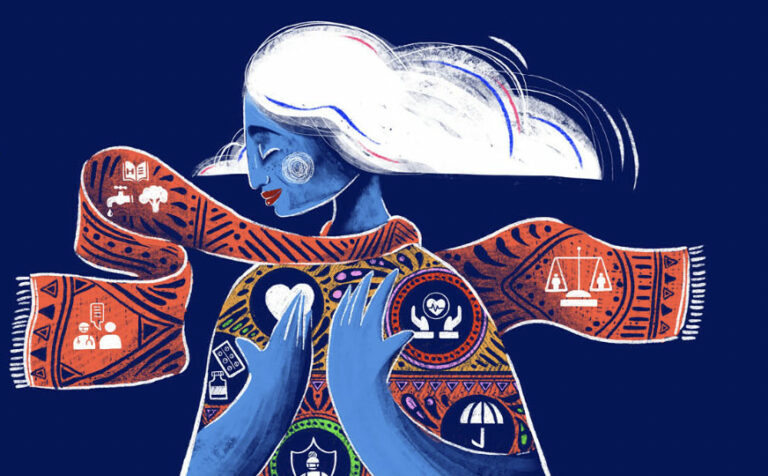
The challenges of circularity in the EU Green Deal: why is industrial development in the EaP region crucial to achieve a just transition towards industry 5.0?
Climate change and environmental degradation are an imminent threat, to people, regions, and countries alike. To mitigate them, the European Union has put in motion an ambitious policy plan (both at home and with international partners) in the bid to become the world’s first climate-neutral continent by 2050. If its plan sounds too bold, it probably is.
The EU Green Deal (EGD), the Union’s trump card in making its economy sustainable and green, comprises an extensive set of policies meant to boost resource efficiency and circular economy, whilst restoring biodiversity and cutting pollution – all while “leaving no one behind”. However, the transition towards circularity, and inevitably, the next generation of sustainable, human-centric, and resilient 5.0 industry, will not happen on its own.
Green Deal Criticism
The hard truth in fighting climate change is that the EU accounts for more than one-fifth of world CO2 emissions, with a disappointingly slow pace in decoupling them from industrialization, and growth, from environmental decay. Even with the overall number of emissions continuing to drop by over 20% since 1990, current estimates still suggest the EU is not yet on track to meet its Paris targets (limiting global warming to well below 2 degrees Celsius) and to cut emissions by at least 55% by 2030.
The conceptual framework required for understanding what decoupling is, and what instrumentalities are needed to achieve it, is also still at an infant stage. Today, much of Europe (and the world) functions within a system of linear economy (take-make-waste) heavily reliant on fossil fuels. To ensure a just transition towards a circular one (reuse-refurbish-recycle), more information must be provided to all relevant stakeholders (workers, industries, decision-makers) to equip them with the viable tools to translate circular challenges into green opportunities. The training and upskilling of workers in the sectors most reliant on fossil fuels is, too, of paramount importance, together with the social inclusion, connection, and education of industries and communities to reach industry 5.0 (reinforcing the active role and the contribution of industry into society and complementing the 4th Industrial Revolution approach with green research and innovation).
So far, the EGD flopped its own inauguration at a key summit in Brussels in 2019, with three EU members refusing the pledge to achieve net-zero emissions later in the same year. Behind the scenes, the work on the EGD was also marked by the presence of fossil fuel juggernaut ExxonMobil, leading to NGOs such as Greenpeace calling out on the European Commission to boost climate targets to at least 65% GHG emissions reductions. The EC’s response? It launched an additional regulation plan: the Just Transition Fund (JTF), within a mechanism of the same name.

Leaving no one behind
The EC claims that at least €1tn needs to be allocated for the EGD to be implemented over the next years, with the biggest share, €503bn, coming from the EU budget, and the rest, from national governments and the private sector (plus €100bn in the “just transition” of industry workers). But €1tn might not be enough to ensure the decoupling of growth from resource consumption, and the propulsion of a green, sustainable EU economy. When asking whether the EGD can make a real difference, the short answer would be, it needs to. This is because the current measures do not suffice in lowering emissions by 2030, all whilst handling the required, disruptive change towards green growth (all without creating extra safety nets for the workforce in the fossil fuel sector, or marginalising regions). This is especially important in the bilateral and multilateral agreements the Union has with international partners and neighbours.
EaP for Environment
A riveting example, in this case, is the role of the Eastern Partnership (EaP) region. The EaP, which consists of Armenia, Azerbaijan, Belarus, Georgia, the Republic of Moldova, and Ukraine, is an important player in the discourse for achieving the aims of the EU Green Deal. Under the aegis of the EU Neighbours East, this joint policy initiative aims to strengthen relations between the EU and the six partner members, including on the commonly agreed goals for circular economy and climate mitigation. As such, within the important political momentum of the 10th anniversary of the EaP, the EU4Environment Action was launched.
By bringing together environmental and economic actors, EU4Environment fosters the delivery of policy and legislative change that make planning and investment greener, stimulating, thus, the modernisation of EaP industries by adopting new business models and creating green jobs. It also promotes better environmental governance, the protection of land and forests, and sustainable trade in the Eastern region. With five implementing partners – three UN agencies (UNECE, UNEP, and UNIDO), the OECD, and the World Bank Group – EU4Environment clusters its work into five thematic areas, namely: greener decision-making; circular economy and new growth opportunities; an environmental level playing field; ecosystem services and livelihoods; and regional knowledge sharing and coordination.

Ways forward
To achieve the 2nd component on circular economy and new growth opportunities (implemented by UNIDO and UNEP), the commitment of the EU4Environment Action goes well in line with national and regional efforts of the EaP region (Azerbaijan 2030 Agenda for green growth, Georgia’s development of a Circular Economy Strategy and Roadmap, or Moldova’s 2030 Green Economy Package, to name a few). The recording of such endeavours is crucial in creating a paradigm shift for industries to become low carbon and resource efficient.
By doing so, they benefit from new openings to create value (human, technical, and biological), as circular economy remodels how industries design, create, and consume resources throughout their lines of production. Based on three principles (elimination of waste and pollution, keeping products and materials in use, and regenerating natural systems), the circular economy principles can change how certain resources (steel, cement, aluminium, and plastic) are produced and used, leading to a reduction of GHG emissions of up to 40% by 2050. This is why industries must play an active role in providing solutions to the current challenges in society (including the preservation of resources, climate change, social stability and education). Reviewing existing value chains and consumption patterns can also make them more durable against external shocks (helping them to adapt, evolve, and embrace the green and digital transition while staying competitive). All in all, the leitmotif of the conversation remains the same: to become green and sustainable, resource decoupling must become the tenet of all new industrialisation developments, encouraging industries and international actors alike to invest in green growth and circularity. As such, technological and social innovations, combined with rapid digitalisation, bring forth a vital opening to make decoupling a reality and pave the way for industry 5.0.
LATEST

How you can help the planet every day

Building Europe: Poland’s experience of joining the European Union and lessons for Ukraine

World Health Day 2024: My Health, My Right

EUREKA MEETS EUROPE – opportunities to develop and study. My experience

Can you wear pink in the workplace?
More campaign pages:
Interested in the latest news and opportunities?
This website is managed by the EU-funded Regional Communication Programme for the Eastern Neighbourhood ('EU NEIGHBOURS east’), which complements and supports the communication of the Delegations of the European Union in the Eastern partner countries, and works under the guidance of the European Commission’s Directorate-General for Neighbourhood Policy and Enlargement Negotiations, and the European External Action Service. EU NEIGHBOURS east is implemented by a GOPA PACE-led consortium. It is part of the larger Neighbourhood Communication Programme (2020-2024) for the EU's Eastern and Southern Neighbourhood, which also includes 'EU NEIGHBOURS south’ project that runs the EU Neighbours portal.

The information on this site is subject to a Disclaimer and Protection of personal data. © European Union,